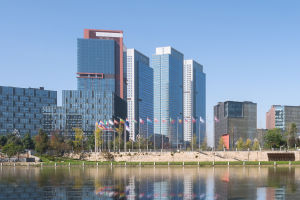Heating practices vary across countries around the world, contingent upon factors such as climate, geographical location, resource availability, and the level of technological development.
This article aims to provide a comprehensive overview of heating methods in several major countries and regions to illustrate the diversity and global disparities in heating technology.
China
China, one of the largest heating markets globally, employs a wide array of heating methods. In the cold northern regions, like Beijing and Harbin, central heating systems take precedence.
These systems typically utilize coal, natural gas, or hot water boilers to transfer thermal energy through pipelines to radiators or underfloor heating systems within buildings. In contrast, in southern regions, decentralized heating systems prevail, often utilizing electric heaters or air conditioning heat pumps.
USA
Heating methods in the United States exhibit regional variations. In colder areas, such as northern Minnesota and Wisconsin, heating predominantly relies on natural gas or petroleum-fueled central heating systems.
In southern regions, electric heaters and heat pumps are the primary heating options. Solar heating is also gaining traction in some areas, especially in warmer climates like California.
Canada
Canada, likewise, confronts severe winter weather. Heating methods vary by region. In urban areas such as the Greater Toronto Area and Vancouver, natural gas serves as the primary heating fuel. In remote and northern areas, wood-burning stoves, oil furnaces, and electric heating systems are more common.
Sweden
Sweden is renowned for its sustainable energy heating practices. A substantial portion of heating relies on biomass fuels, such as wood and sawdust, alongside geothermal heat. These renewable energy sources contribute to a reduction in greenhouse gas emissions while ensuring the sustainability of heating.
Japan
Heating methods in Japan predominantly rely on electricity and liquefied petroleum gas (LPG). In the northern regions, electric heaters or oil heaters are commonly used. Some households also utilize floor heating systems, and in specific regions, solar heating is gradually garnering attention.
Germany
Germany is lauded for its efficient heating systems and the utilization of renewable energy. Central heating systems and geothermal systems are widely employed in urban areas, with solar heating systems gaining increasing popularity.
Government support and incentive programs have driven the adoption of renewable energy heating technologies.
South Korea
South Korea's heating methods primarily rely on natural gas heating and electric heaters. Given the relatively warm climate, solar heating systems have limited applications.
India
Heating practices in India exhibit regional disparities. Wood and coal are often employed for heating in cold northern regions. Some urban areas use natural gas for heating, while warmer southern regions often rely on electricity and solar heating.
Australia
Heating methods in Australia exhibit variations based on climate differences. In colder southern regions, natural gas or electric heaters are commonly used for heating. In the warm northern regions, air conditioning systems are of paramount importance.
In conclusion, heating methods are influenced by climate, resource availability, and technological advancement, resulting in a rich tapestry of heating technologies across the globe.
Central heating systems, natural gas heating, electric heaters, solar heating, and geothermal systems all find widespread use.
However, as the focus on sustainable energy intensifies, the promotion of renewable energy heating technologies in some countries aims to reduce dependence on fossil fuels and mitigate greenhouse gas emissions.
As technology continues to advance, the future of heating methods is likely to evolve further to meet changing needs and environmental challenges.


